Introduction
Japanese food online shopping has transformed how we find, purchase, and enjoy beloved dishes and ingredients, no matter where we live. From procuring specialized seasonings like miso or mirin to discovering rare snacks found only in corner shops of Tokyo, online markets cater to global demand for authentic Japanese flavors. The convenience of doorstep delivery, coupled with vast product variety, has attracted foodies eager to prepare sushi, ramen, or tempura at home using premium goods sourced straight from Japan.
With e-commerce making everything accessible, enthusiasts no longer need to rely solely on local Asian grocery stores—japanese grocery sites offer everything from artisanal soy sauces to fresh produce shipments, bridging distance and dietary preferences. This article unpacks where to find the best japanese food grocery online, how to secure high-quality shipments, and ways to maximize your experience—whether you crave a cupertino japanese supermarket vibe or want to indulge in new japanese snack store discoveries.
For additional inspiration on bringing the spirit of Japanese cooking to your kitchen, explore our japanese-steak-recipe for a meal idea that seamlessly integrates premium ingredients you can source online. Let’s delve into the intricacies of japanese food online options, unraveling the best practices for selecting reputable vendors, ensuring freshness, and exploring the rich tapestry of flavors.
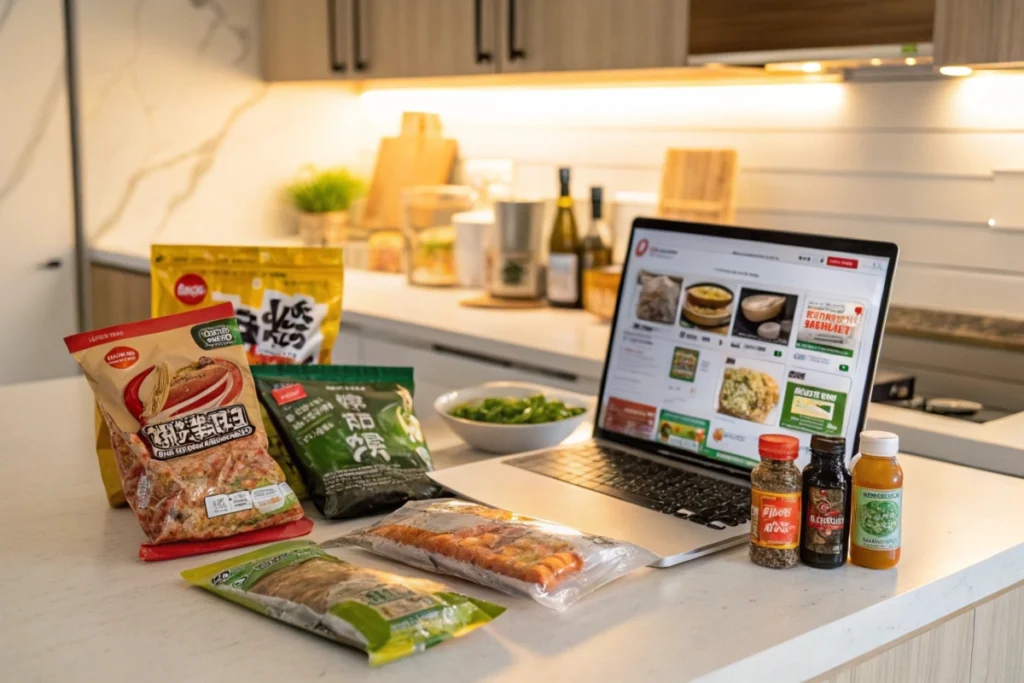
1. Why Shop for Japanese Food Online?
Global Demand for Authentic Ingredients
The surge in japanese food online services isn’t an accident. As more cooks and foodies embrace authentic recipes, the demand for premium Japanese products outstrips what local Asian groceries sometimes provide. Certain regions have limited japanese grocery offerings, making online marketplaces a godsend. By tapping into global e-commerce, enthusiasts gain access to specialized items like yuzu kosho, konbu, or region-specific soy sauces.
- Variety of Brands: Online platforms often stock multiple brands (from household names like Kikkoman to artisanal makers), letting buyers pick products that match their taste or dietary needs.
- Niche Selections: Items like matcha latte kits or koshihikari rice can be found online, even if your local store lacks them.
- Convenience: Busy schedules limit the time for physical supermarket visits. Online orders solve that by delivering straight to your doorstep—sometimes even with chilled or frozen packaging for perishable goods.
Cultural Connection and Culinary Exploration
Japanese food online sources also cater to cultural enthusiasts wanting to replicate real Japanese dishes. By purchasing specialty items, they ensure recipes stay true to tradition. Substitutes might work in a pinch, but using legit dashi packs, miso, or katsuobushi can drastically elevate your cooking.
- Expanding Palates: Trying region-specific soy sauce from Kyushu or snack flavors exclusive to Hokkaido spurs gastronomic curiosity.
- Educational Value: Online listings often detail usage suggestions, origin stories, or pairing ideas, deepening your knowledge of japanese food store items.
Supporting Small Businesses
Many japanese snack store owners or small-scale importers rely on online orders to sustain their enterprises. By shopping with them, you support niche artisans and family-run businesses that bring unique flavors to the global market. If you discover a local “mom-and-pop” e-store specializing in mochi or ramen bases, your purchase fuels their passion and helps preserve culinary diversity.
Relevance of Delivery Services
Platforms like Amazon, Rakuten, or specialized japanese grocery sites frequently partner with global delivery carriers. This synergy ensures timely shipping, temperature-controlled packaging, and safe product handling—crucial for delicate, perishable goods. Quick shipments, often 2-5 business days, let you plan cooking schedules around deliveries.
- Subscription Boxes: Some consumers opt for subscription services offering curated snack or ingredient boxes monthly, unveiling new items each cycle.
- Bulk Purchases: Frequent deals or free shipping thresholds incentivize buying multiple items at once—ideal for families or dedicated Japanese cooking fans.
Spotlight on Cupertino Japanese Supermarket Trend
Areas with high demand for Japanese products, like Cupertino in California, highlight a unique phenomenon—local Japanese supermarkets bridging offline and online. They offer walk-in experiences but also run robust e-stores or curbside pick-up. This approach merges convenience with in-person browsing if you live nearby.
Check out japanese-chicken-fried-rice-recipe- for instance, to see how fresh produce from an online grocery or a local store elevates a staple dish. Whether you prefer offline rummaging or digital cart-filling, the ability to transition between both channels underscores how robust japanese food online has become globally.
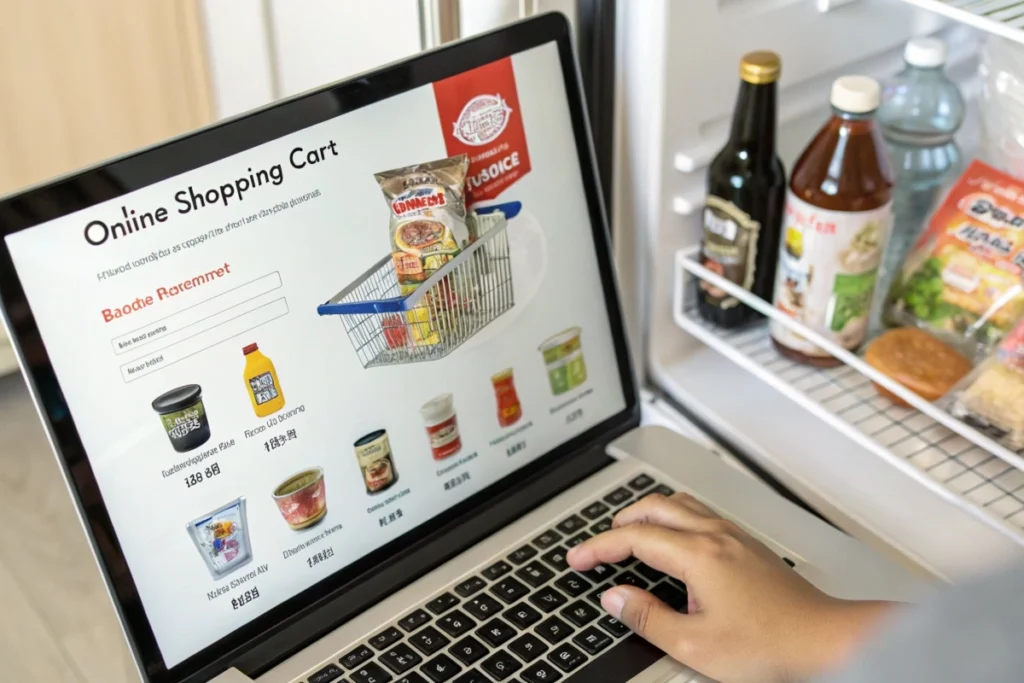
2. Key Online Platforms & Services
Major E-Commerce Platforms
- Amazon
- Overview: Amazon offers a broad selection, from mainstream brands to lesser-known Japanese staples. Prime users benefit from fast shipping.
- Pros: Large inventory, competitive pricing, reliable shipping.
- Cons: Product authenticity can vary; read reviews carefully.
- Rakuten Global Market
- Overview: Based in Japan, Rakuten connects international shoppers to domestic Japanese stores. Perfect for sourcing niche items.
- Pros: Authentic selection, direct from Japan, deals on specialized products.
- Cons: Potentially higher shipping fees or complicated returns.
- Specialized Japanese Grocery Sites
- Overview: Websites dedicated to japanese food online groceries—like Tokyo Central or Japan Centre—focus solely on Japanese items.
- Pros: Guaranteed authenticity, curated product lines, often better product knowledge.
- Cons: Prices can be higher than big-box retailers.
Subscription and Snack Boxes
Subscription services or japanese snack store boxes let you explore new goodies monthly. They often feature curated snacks, candies, or instant ramen packs.
- TokyoTreat / SnackCrate: Offer a mix of sweet, savory, and limited-edition snacks. Great for exploration without committing to full-size packs.
- Bokksu: Emphasizes artisan treats from local Japanese makers. Usually includes a culture guide explaining each snack’s origin.
Local Online Supermarkets
Certain cities host dedicated Japanese or Asian supermarkets with e-commerce options. The cupertino japanese supermarket model is a prime example—stores like Mitsuwa or Nijiya that have partial or full online ordering systems.
- Curbside Pickup: Ideal if you reside near the store, you can avoid shipping costs.
- Local Delivery: Some grocery chains partner with delivery apps for same-day fresh produce or fish.
Factors to Consider
- Shipping & Packaging: Perishable goods (like fresh fish for sushi) require cold packs or expedited shipping. Confirm if the seller offers such options.
- Authenticity Checks: If you’re uncertain about brand authenticity, rely on reviews or verified store profiles.
- Return/Refund Policies: Especially crucial for damaged items (broken soy sauce bottles) or expired products.
- Bulk Orders: If you cook Japanese dishes frequently, consider buying in bulk for soy sauce, rice, or mirin. Watch for deals or free shipping thresholds.
Exploring Additional Resources
For tips on how to best use these online-sourced items, you might look into vegetables-japanese-recipe or other cooking guides. This synergy between digital grocery shopping and tried-and-true recipes fosters confidence in your newly purchased staples—like trying that distinct dashi brand or artisan miso you’ve only seen on cooking shows.
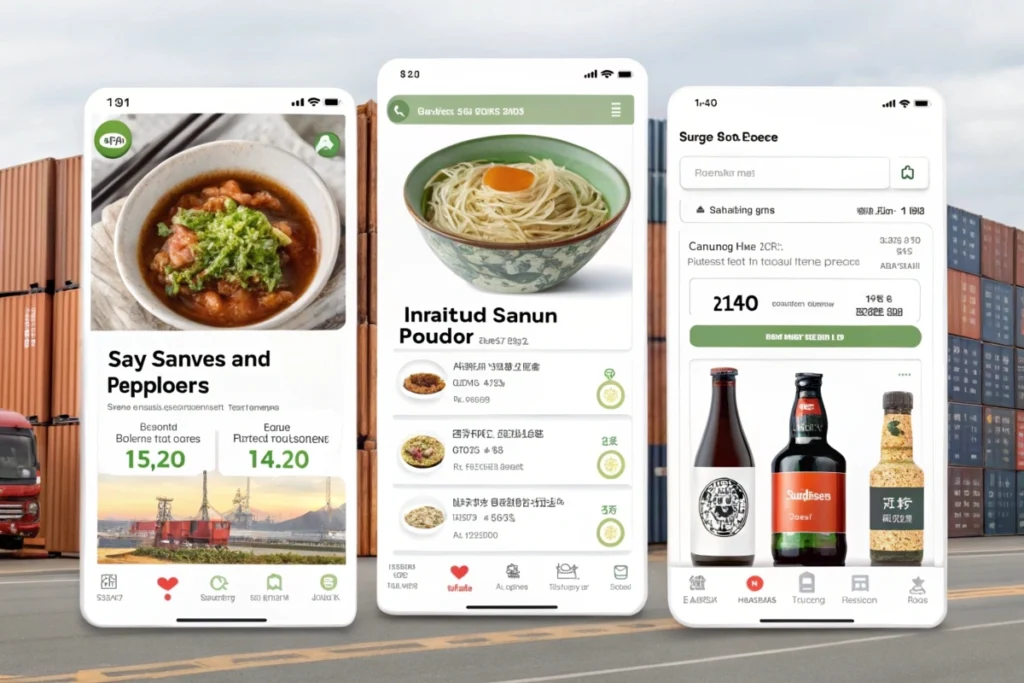
3. History and Context: How Online Japanese Food Emerged
From Local Markets to Global E-Stores
The history of japanese food online shopping parallels broader e-commerce trends. Originally, those seeking authentic Japanese groceries relied on specialized shops in big cities. Over time, as the popularity of sushi and ramen soared internationally, demands for specialized goods outgrew these small physical stores. By the early 2000s, a handful of entrepreneurs recognized the gap—leading to the first wave of japanese food grocery online sites.
Key Milestones
- 1990s-2000s: Rise of the internet triggered niche e-commerce attempts, but slow adoption in rural areas hampered business expansions.
- Mid-2000s: Growing interest in anime, manga, and J-pop boosted interest in Japanese snacks like Pocky or Ramune soda, fueling the “snack box” era.
- Late 2000s to Early 2010s: Large retailers like Amazon integrated with Japanese suppliers, scaling product availability.
- Present Day: Subscription boxes, large e-stores, and local hybrids (like cupertino japanese supermarket with an online branch) reflect a mature market.
Influence of Pop Culture
Western consumption of Japanese pop culture—through anime or gaming—sparked curiosity about cuisines depicted in shows. Fans wanted the same ramen or melonpan they saw characters enjoy. The internet bridged that gap, letting them order these items from japanese snack store sites. This cultural synergy accelerated the normalization of “weird” or “exotic” products, now seen as mainstream or even trendy.
Technological Catalysts
Advancements in shipping technology (like vacuum-sealed packaging or temperature-controlled logistics) allowed safe, fresh shipments across continents. Payment gateways improved, fostering consumer trust in cross-border transactions. Meanwhile, robust tracking tools and SERP (Search Engine Results Page) analysis helped marketers identify top searches—like “japanese food online free shipping” or “japanese grocery near me”—fine-tuning inventory and SEO strategies.
Local Impact and Global Trade
The success of online Japanese groceries also shaped domestic trade. Smaller producers, once reliant on local markets, found direct-to-consumer channels abroad. This shift diversified their revenue streams, ensuring artisanal miso or region-specific sweets reached fans worldwide. Conversely, it also introduced foreign competition to local shops, compelling them to bolster marketing or offer specialized in-store experiences.
Convergence of Trends
At this intersection of cultural appetite, logistic innovations, and digital marketing, japanese food online soared. Shoppers can buy Hokkaido cheese tarts or Kagoshima black pork cuts from halfway around the world. If you want to see how these products can transform dinner, consider referencing noodles-japanese-pan-noodles-recipe to re-create a restaurant-quality meal in your home.
Overall, the shift from local specialty stores to global e-commerce revolutionized access to Japanese fare, democratizing high-end sakes or obscure snack flavors. As logistical and tech solutions continue to evolve, expect even faster shipping, improved sustainability, and an ever-widening range of japanese food online offerings.
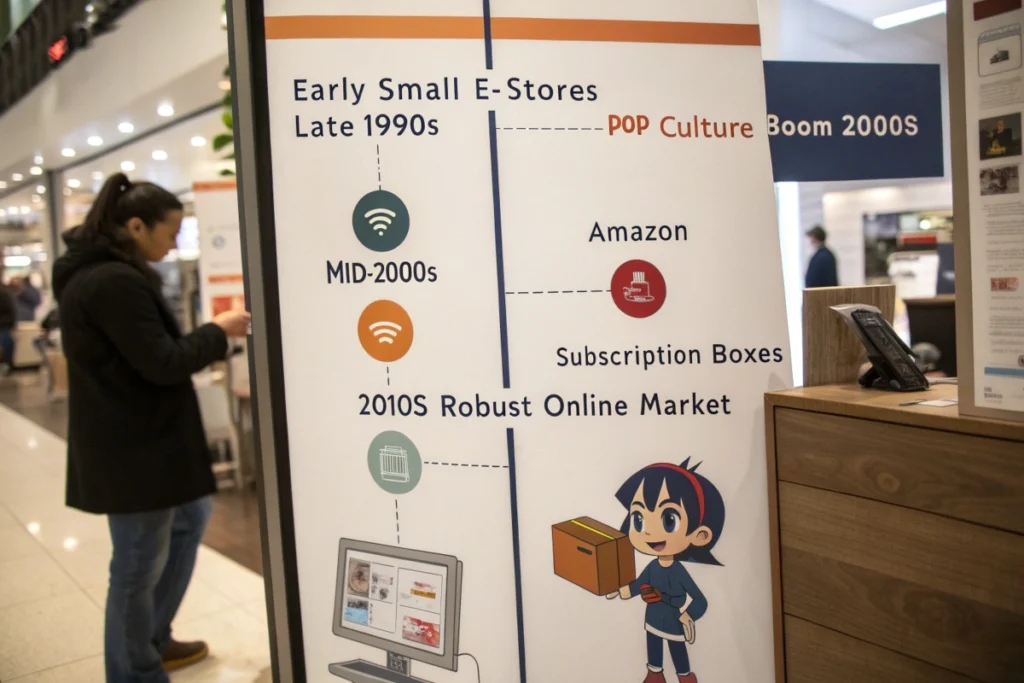
4. Practical Examples/Use Cases
Scenario 1: Weekly Meal Planning
Imagine you want to incorporate more Japanese dishes into your routine—like miso soup for breakfast or teriyaki salmon for dinner. Rather than scouring multiple local markets for specialized condiments, you hop onto an online japanese food store and fill your cart with fresh miso paste, authentic soy sauce, and quality short-grain rice. Subscribing to a monthly produce box also ensures timely deliveries of seasonal veggies. This approach saves time and guarantees a consistent supply of authentic staples, streamlining your meal planning.
Scenario 2: A Cozy Themed Dinner Party
Hosting a Japanese-themed dinner becomes hassle-free by shopping japanese food online. You quickly order dashi, wakame, and sake days before the event. Delivery arrives well-packaged, so you’re set to create a multi-course feast—miso soup, tempura, sushi rolls. Guests marvel at your authenticity, and you can even serve matcha-flavored desserts from japanese-dessert-recipes to complete the evening.
Scenario 3: Exploring Rare Snacks & Regional Specialties
You might crave matcha kitkats or regional potato chips you tried while traveling in Japan. Online japanese snack store sites cater to that nostalgia, letting you stock up or try new flavors. This works especially well for limited-edition items—like seasonal Sakura-themed candies or region-exclusive mochi—sparking excitement each time you unbox a package.
Scenario 4: Corporate Gifting & Team Building
A company might order curated japanese food online snack boxes for employees, fostering a sense of cultural appreciation. Each box can include a small info card explaining the snack’s origin. A Zoom “taste test” session can break the monotony of remote work, letting participants discuss unique flavors and favorites. By referencing japanese-vegan-recipes in a follow-up, those with dietary preferences also find inclusive options.
Enhancing Culinary Creativity
Whether you’re a seasoned chef or a home cook, easily available japanese food online resources open the door to experimentation. You can try new sauce variations, unusual ramen flavors, or obscure desserts, ensuring your cooking repertoire stays fresh.

5. FAQs on Japanese Food Online
1. Japanese food online usa—are there reputable stores?
Yes, numerous japanese food online stores operate in the USA, from mega-sites like Amazon to specialized importers like Japan Centre or Tokyo Central. Look for user reviews and brand authenticity labels to ensure quality.
2. How can I find Japanese food online near me?
Search for local store websites offering delivery or partnerships with apps like Instacart. Also, input terms like “japanese food grocery online + [your city]” to find specialized shops or local subscription services. Some cupertino japanese supermarket models, for example, serve broader areas with curbside pickup or shipping.
3. Is shipping expensive for fresh items like sushi-grade fish?
Shipping costs vary depending on distance, packaging, and vendor policies. Sushi-grade fish typically ships in insulated containers with dry ice or gel packs, which adds to cost. Check for free-shipping thresholds or bulk discounts if you purchase multiple items at once.
4. Are subscription snack boxes worth it?
If you enjoy exploring new flavors and discovering japanese snack store exclusives, subscription boxes can be great fun. They curate rare or seasonal products, often cheaper than individually ordering. However, be sure you like surprises; these boxes might not suit those seeking specific items.
5. Can I get fresh produce from online Japanese supermarkets?
Yes, many e-grocers offering japanese food online free shipping also stock produce—like specialty mushrooms, shiso leaves, or daikon radishes. Some freeze or vacuum-seal produce. However, ensure the vendor uses expedited shipping to maintain freshness.
6. How do I confirm authenticity of products?
Reputable sites often feature detailed product descriptions, brand backgrounds, and user reviews. Avoid suspiciously cheap deals lacking brand details or official packaging. For mainstream items, recognized brand names like Kikkoman or S&B indicate authenticity.
7. Any ways to save on shipping or costs?
Many sites run promotions or offer free shipping above a certain purchase amount. Bulk purchases of staples—like rice or miso—help minimize shipping fees. Loyalty programs or seasonal sales can further reduce costs.
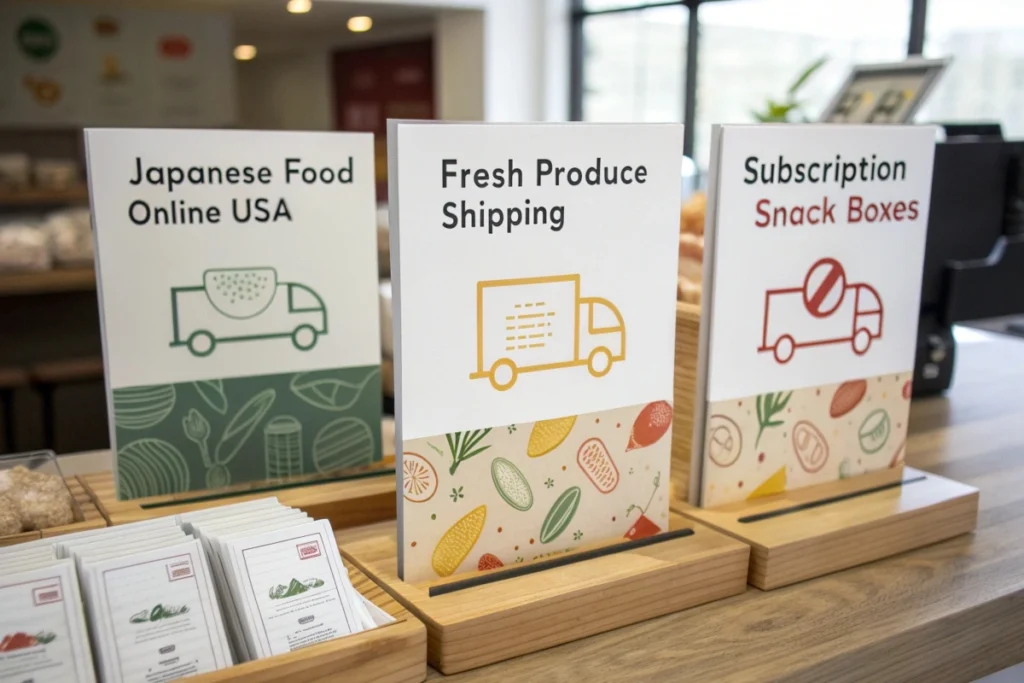
Conclusion
Japanese food online shopping has evolved from a niche convenience into a vital lifeline for global foodies craving authentic flavors. By accessing specialized sites, subscription services, or local supermarkets with e-commerce branches, enthusiasts can explore an ever-growing array of sauces, snacks, produce, and even sushi-grade fish. This wide availability meets rising demands for fresh, culturally rich cooking experiences that reflect Japan’s culinary excellence.
Whether you’re a novice in the kitchen or a seasoned chef, the internet bridges any geographic limitations—connecting you to japanese grocery items once only found in exclusive city districts. For those eager to start cooking, see easy-japanese-recipes to transform your pantry finds into memorable meals. By balancing cost, authenticity checks, and shipping methods, japanese food online ensures you’re always just a few clicks away from creating a ramen feast, assembling sushi rolls for friends, or indulging in a night of rare snack tasting.
Embrace this digital era of globally connected cuisine. As you stock up on favorite condiments or discover new treats, you forge deeper links with Japan’s dynamic food culture—one that continues to delight and inspire across continents, reaffirming the unstoppable demand for authentic tastes at home.

